Part II Japan’s Official Development Assistance and Trends in Aid of Other Donors in Terms of Disbursement

A Japanese engineer giving instructions to local workers on concrete pouring work at the construction site of the “Project for the Rehabilitation of Kizilkala-Bokhtar Section of Dushanbe-Bokhtar Road,” a grant aid project in Tajikistan (Photo: JICA)
1 Japan’s Official Development Assistance in Terms of Disbursement
Japan’s total ODA in 2022Note 1 was approximately 17,499.94 million US dollars (approximately 2,300 billion yen) according to the Grant Equivalent System (GE system)Note 2 introduced from 2018. As a result, among the members of the Development Assistance Committee (DAC) of the Organisation for Economic Co-operation and Development (OECD), Japan ranked thirdNote 3 following the United States and Germany.
The breakdown is as follows. Bilateral ODA accounted for approximately 85.0% of overall disbursements, while ODA to multilateral institutions accounted for approximately 15.0%. Bilateral ODA is expected to contribute to strengthening Japan’s relations with recipient countries. Meanwhile, ODA to multilateral institutions that have expertise and political neutrality enables Japan to support countries and regions where its direct bilateral assistance is difficult to reach. Japan will actively provide aid that ensures the “visibility of Japan,” while making flexible use of the above types of assistance and coordinating between them.
As regards bilateral ODA by aid scheme, the funding provided as grant aid through the GE system totaled approximately 3,257.86 million US dollars (428.2 billion yen), or approximately 18.6% of total ODA. Among these grants, grants through multilateral institutions, etc., accounted for approximately 2,293.02 million US dollars (301.4 billion yen), or approximately 13.1% of total ODA. Technical cooperation accounted for approximately 2,362.31 million US dollars (310.5 billion yen), or approximately 13.5% of total ODA. With regard to government loans, etc., loan disbursements accounted for approximately 14,020.44 million US dollars (1,842.7 billion yen), while the grant equivalent of government loans, etc., totaled approximately 9,257.38 million US dollars (1,216.7 billion yen), or approximately 52.9% of total ODA.
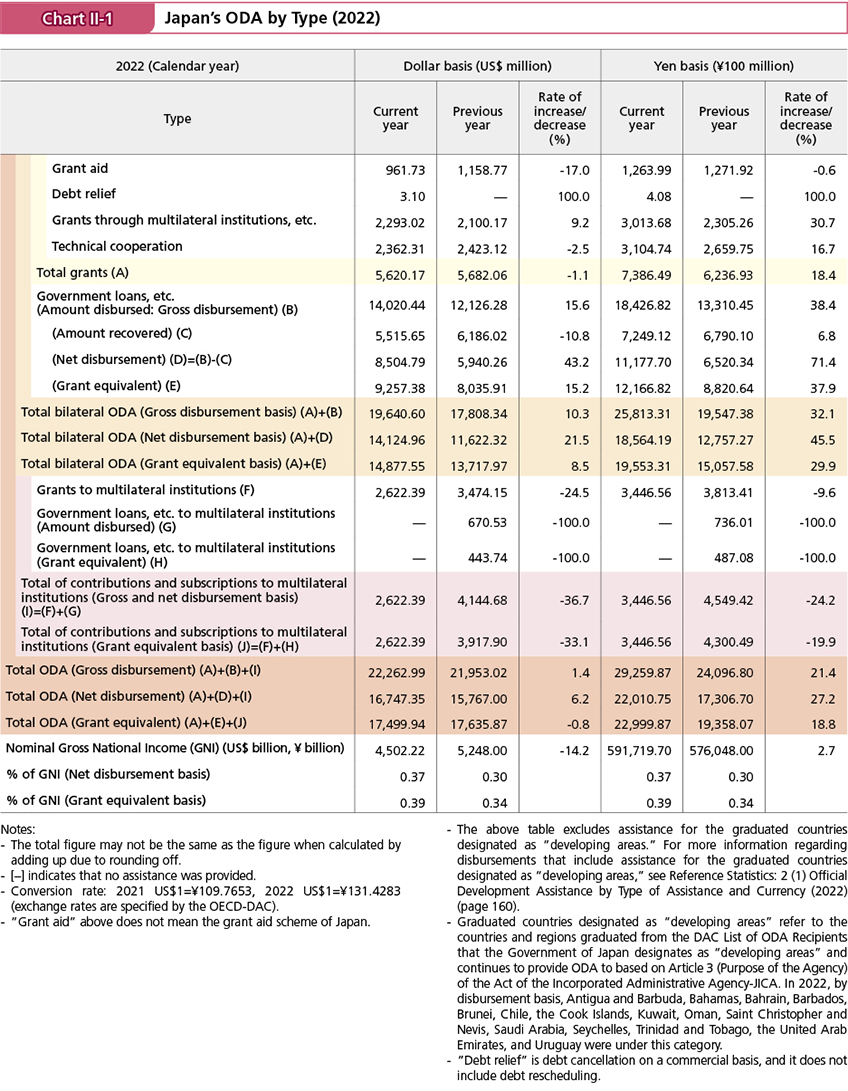
Japan’s bilateral ODA disbursements (including support for the graduated countries designated as “developing areas”Note 4), in descending order by percentage of total disbursements (gross disbursements), are as follows.Note 5 (See Chart II-2 and Chart IV for details.)
◆Asia: 56.0% (approximately 10,997.36 million US dollars)
◆Middle East and North Africa: 12.0% (approximately 2,354.31 million US dollars)
◆Sub-Saharan Africa: 8.5% (approximately 1,677.34 million US dollars)
◆Latin America and the Caribbean: 4.6% (approximately 911.27 million US dollars)
◆Oceania: 1.3% (approximately 248.74 million US dollars)
◆Europe: 4.2% (approximately 819.47 million US dollars)
◆Assistance covering multiple regions: 13.4% (approximately 2,632.14 million US dollars)
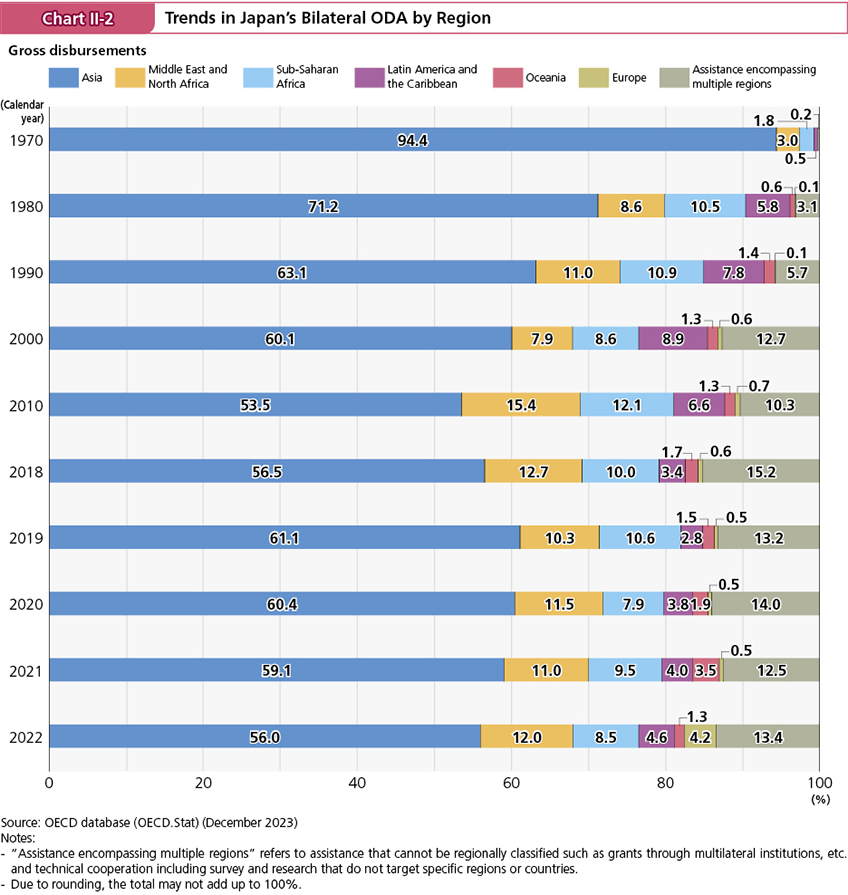
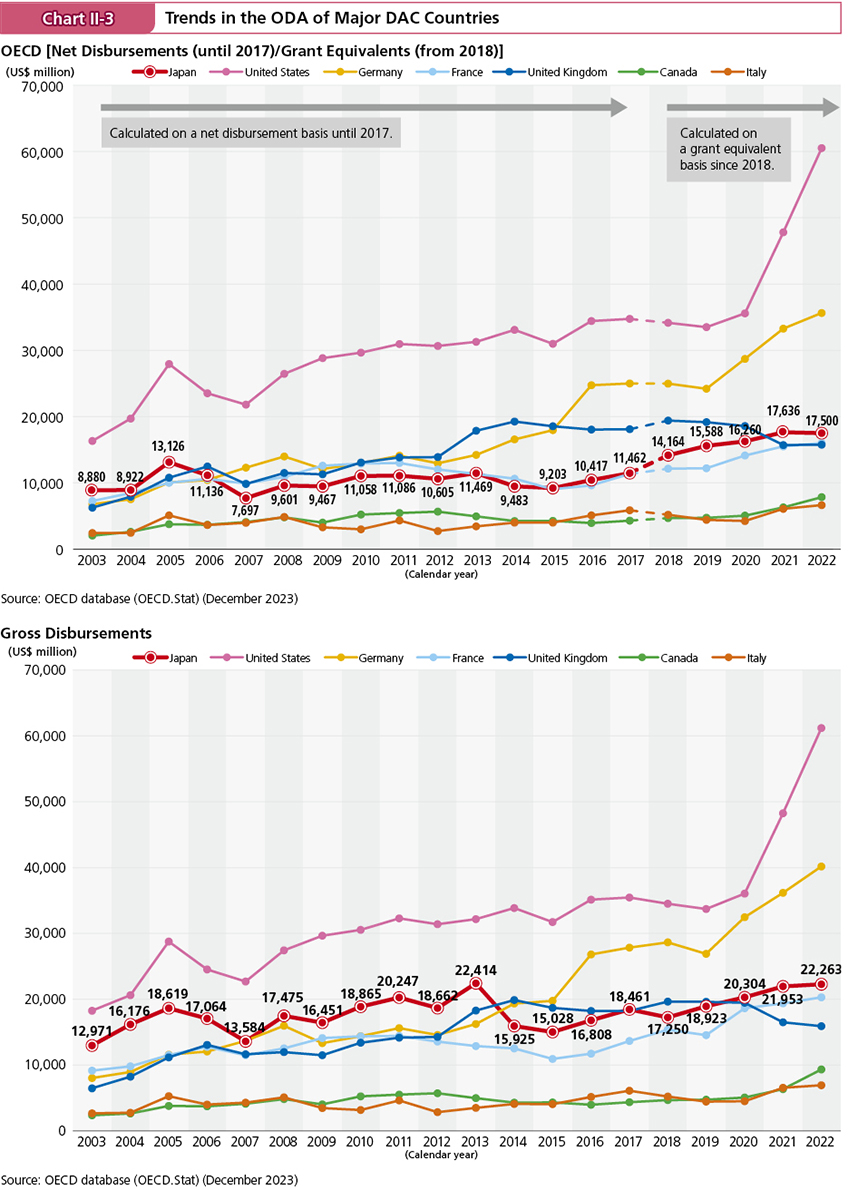
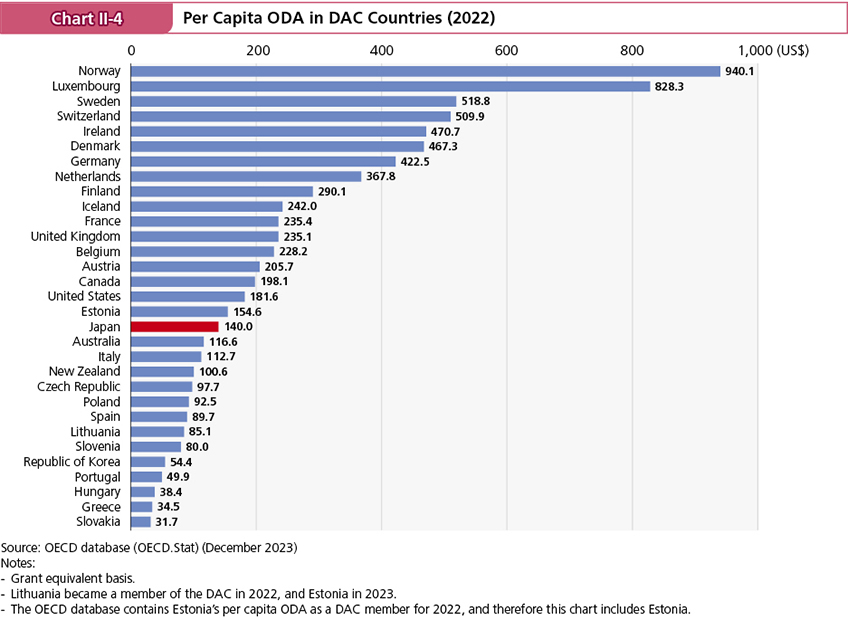

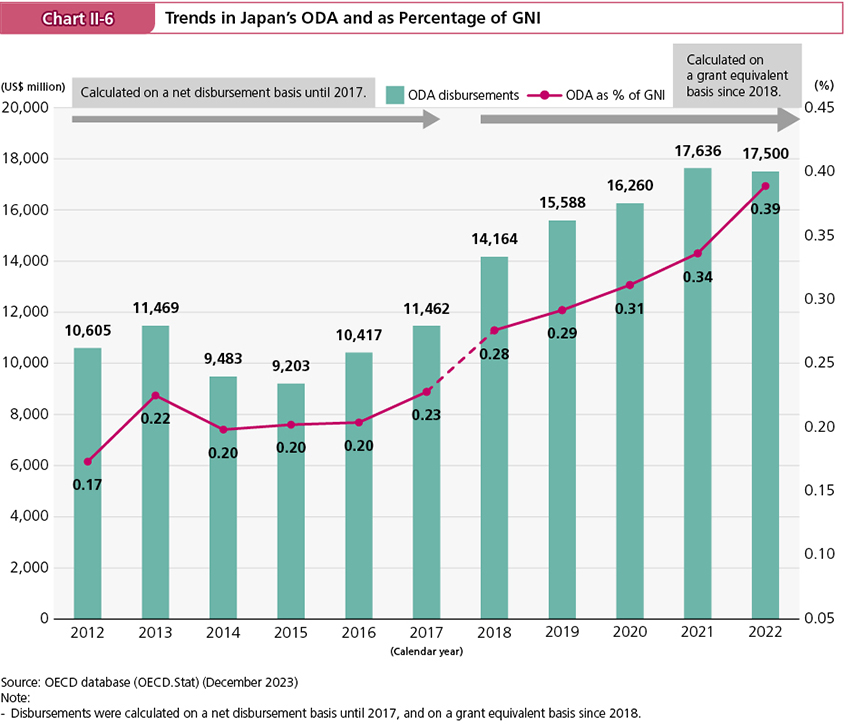
- Note 1: DAC members’ final figures for ODA disbursements in 2023 are to be published at or after the end of 2024.
- Note 2: The GE system records the amount of government loans, etc., equivalent to a grant as an actual ODA disbursement. The grant equivalent is calculated by applying the terms of the loan, such as the amount of loan provided, interest rate, and repayment period, to a formula. The more concessional the terms of the loan are, the larger the grant equivalent is. This system measures Japan’s actual government loans, etc., more accurately compared to the net flow system, which was the standard used by the DAC until 2017. (The full amount of the loan is recorded; on the other hand, repaid amounts are counted as negative.)
- Note 3: OECD database (OECD.Stat) (December 2023)
- Note 4: Graduated countries designated as “developing areas” refer to the countries and regions graduated from the DAC List of ODA Recipients that the Government of Japan designates as “developing areas” and continues to provide ODA to based on Article 3 (Purpose of the Agency) of the Act of the Incorporated Administrative Agency-JICA. In 2022, by disbursement basis, Antigua and Barbuda, Bahamas, Bahrain, Barbados, Brunei, Chile, the Cook Islands, Kuwait, Oman, Saint Christopher and Nevis, Saudi Arabia, Seychelles, Trinidad and Tobago, the United Arab Emirates, and Uruguay were under this category.
- Note 5: Gross disbursement basis.
